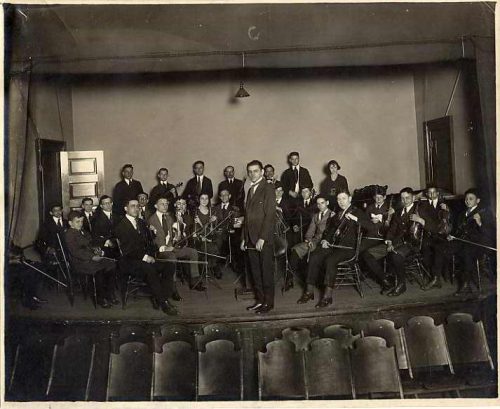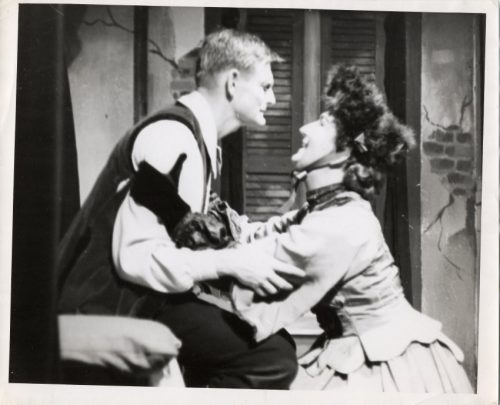Performing Community Part 3

Article by Avi Y. Decter, former JMM executive director, with Erin L. Titter, former JMM archivist. Originally published in Generations – 2003: Entertaining Maryland. To order a print copy of the magazine, see details here.
Part III: Popular Entertainment
Missed the beginning? Start here.
A wide range of community performances focused directly on popular entertainment. The Jewish Educational Alliance sponsored numerous clubs and groups that presented shows to the community. The JEA Orchestra, under the skilled direction of conductor Benjamin Klasmer, was organized in 1919 and for at least a generation was a major musical force in the community. Members of this early youth orchestra later joined the Baltimore Symphony Orchestra and other professional ensembles. The JEA also sponsored the Maccabean Glee Club and the Meyerbeer Society, singing groups that helped to feed the nascent Civic Opera Company.

The Alliance Players, a JEA dramatics club, began productions in the late 1920s. Led by noted director Harry King, the Alliance Players met weekly to read and critique plays, practice their theatrical skills, and prepare for performances in the community. In 1933, the Alliance Players appeared in performances at the Jewish Educational Alliance auditorium on Lombard Street, and at City Hospital, the Madison Avenue Temple, the Bolton Street Temple, the Council on Jewish Youth, and the Methodist Church on York Road. In addition to full seasons of one-act and full-length plays, the Alliance Players appeared on local radio for weekly broadcasts during the 1930s.[1]

The JEA sponsored numerous clubs, many of which also produced annual entertainments. One such group, the Shoshanna Club, which was active in the 1940s and ‘50s, developed musical revues and minstrel shows. Their 1945 production, Git on Board, was described as an all-girl minstrel show replete with “Mirth, Melody, and Mischigas.” Some of these JEA productions were popular dramas of the day; others were written by local authors on Jewish themes; and still others were parodies or pastiches that dew on mainstream entertainments. As former club member Rae Rossen put it, the club provided a “home away from home” that helped members to “grow culturally.” Whatever their provenance or form, these productions engaged Jewish youth in the challenging work of transitioning from a largely immigrant community in the early twentieth century to a primarily native-born, fully acculturated community by mid-century.[2]
In the postwar years, a number of community groups continue to present entertainments. One of the best-known of these is the Covenant Guild, a women’s philanthropic organization established in 1947. By 1953, the Covenant Guild had formed a Choral Group that began by entertaining at Guild meetings, then started performing for other organizations, using their performance fees for fundraising to bolster the Guild’s charitable giving. Inevitably, as the group matured, spouses and then children were drawn into performances, including the Guild’s full-scale annual shows presented at the Alcazar. Like other community groups, the Covenant Guild melds traditional Jewish values with contemporary, ironic styles to promote what historian David Glassberg calls “cohesion, continuity, and common purpose.”[3]
Critic Marshall Fishwick has observed that “America is not so much a nation or a people as a search.”[4] Community performances are markets along the path of the Jewish journey here in Baltimore. They affirm, challenge, and interpret the circumstances and values of generations and groups, mirroring experience and guiding future action. Community performances embody a collective imagery, reinforcing the communal identities of performers and audience alike.
The End.
[1] Associated Citizen, June 1933. Courtesy of the Jewish Educational Alliance Archives (at the JCC, Owings Mills) and JEA Archivist Bernard Cohen.
[2] Telephone interview with Rai Rossen, July 5, 2003. Interview with Bernard Cohen, July 8, 2003.
[3] Glassberg, American Historical Pageantry, p. 282.
[4] Fishwick is cited in Ima Honaker Herron, The Small Town in American Drama (Southern Methodist University Press: Dallas, 1969), p. xvii.
